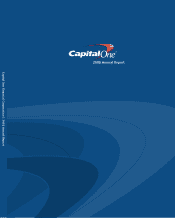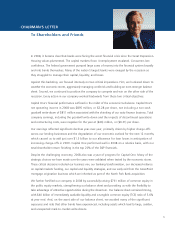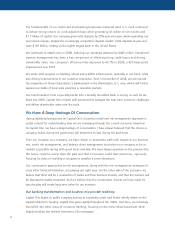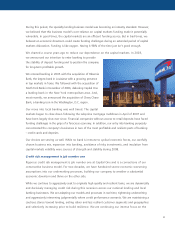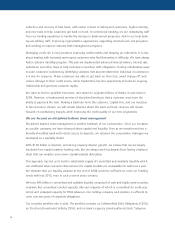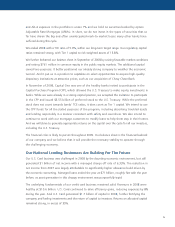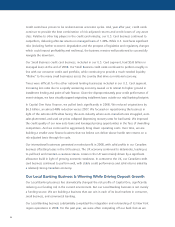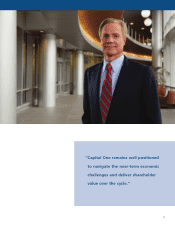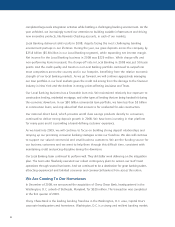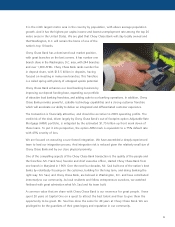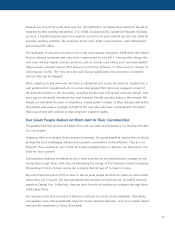Capital One 2008 Annual Report Download - page 3
Download and view the complete annual report
Please find page 3 of the 2008 Capital One annual report below. You can navigate through the pages in the report by either clicking on the pages listed below, or by using the keyword search tool below to find specific information within the annual report.
In 2008, it became clear that banks were facing the worst financial crisis since the Great Depression.
Housing values plummeted. The capital markets froze. Unemployment escalated. Consumers lost
confidence. The federal government pumped large sums of money into the financial system broadly
and into banks themselves. Many of the nation’s largest banks were ravaged by the recession as
they struggled to manage their capital, liquidity, and losses.
Against this backdrop, we focused intensely on two critical imperatives. First, we hunkered down to
weather the economic storm, aggressively managing credit risk and building an even stronger balance
sheet. Second, we continued to position the company to compete and win on the other side of the
recession. Every action in our company worked backwards from these two critical objectives.
Capital One’s financial performance suffered in the midst of the economic turbulence. Capital One’s
net operating income in 2008 was $895 million, or $2.28 per share, not including a non-cash
goodwill write-down of $811 million associated with the shrinking of our auto finance business. Total
company earnings, including the goodwill write-down and the impacts of discontinued operations
and restructuring costs, were negative for the year at ($46) million, or ($0.21) per share.
Our earnings reflected significant declines year-over-year, primarily driven by higher charge-offs
across our lending businesses and the degradation of our economic outlook for the next 12 months,
which caused us to add just over $1.5 billion to our allowance for loan losses in anticipation of
increasing charge-offs in 2009. Capital One performed well in 2008 on a relative basis, with our
total shareholder return finishing in the top 20% of the S&P financials.
Despite the challenging economy, 2008 also was a year of progress for Capital One. Many of the
strategic choices we have made over the years were validated when tested by the economic storm.
These critical decisions included our business mix, our banking transformation, our decreased reliance
on capital markets funding, our capital and liquidity strategies, and our early exit from the GreenPoint
mortgage origination business which we inherited as part of the North Fork Bank acquisition.
We further fortified our company in 2008 by successfully raising $761 million of common equity in
the public equity markets, strengthening our balance sheet and providing us with the flexibility to
take advantage of attractive opportunities during the downturn. Our balance sheet remained strong,
with $40 billion of immediately available liquidity and a tangible common equity (TCE) ratio of 5.6%
at year-end. And, on the asset side of our balance sheet, we avoided many of the significant
exposures and risks that other banks have experienced, including assets which lead to large, sudden,
and unexpected mark-to-market write-downs.
CHAIRMAN’S LETTER
To Shareholders and Friends
1

